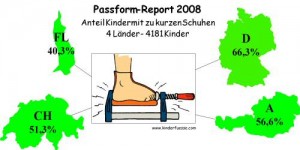Research on children?s shoes: Labeled shoe sizes misleading
How well do kids? shoes really fit? This is the question an Austrian research team investigated in Germany, Austria, Switzerland and Liechtenstein by conducting 42 public ?Measuring Day? events for children. The sobering results: over 50% of the children tested wear shoes that are too short for their feet. The highest percentage of children in poorly-fitting shoes was found in Germany.
For a correct, healthy fit, children?s shoes should allow for an extra 12 ? 17 mm (about ? – ? inch) in length. Previous research conducted by the team has shown that the labeled sizes on children?s shoes are rarely correct, so for this study, researchers measured not only the feet of 4,181 children but also the inside length of their shoes. It was again confirmed that on average, every second child is wearing shoes that are too short. The situation was particularly drastic in Germany, where 66.3% of all the kids tested were squeezed into too-small shoes. Some children were even found to be wearing shoes that were up to 5 sizes too small! The results were not much better in Austria and Switzerland, but slightly improved in Liechtenstein, where 40.3% of the kids measured were wearing poorly-fitting shoes.
The researchers have identified two reasons behind this problem. First, most children?s shoes are labeled misleadingly: the size marked is not the actual size of the shoe. The overwhelming majority of the shoes measured ? almost 85% – was much too short in length. Some shoes were found to be up to 4 sizes smaller than marked (1 EU standard size = 6.67 mm or about ? inch). For example, a shoe labeled size 30 can have the inside length of only a size 26 shoe.
Second, a study conducted in 2007, commissioned by the Austrian Federal Ministry of Health and the Fonds Gesundes ?sterreich (Fund for a Healthy Austria), showed that children between the ages of 6 and 10 cannot tell if their shoes fit properly. When asked, children respond that shoes feel like a good fit, even if they are much too small.
The research team recommends that parents always measure not only the length of their kids? feet when buying new shoes, but also make sure to measure the inside length of the shoes (using either a simple cardboard template or a sliding measuring device). For more information, the research team has written up a brochure for parents and shoe sales staff, which can be downloaded free of charge under: www.kidsfeet.info



